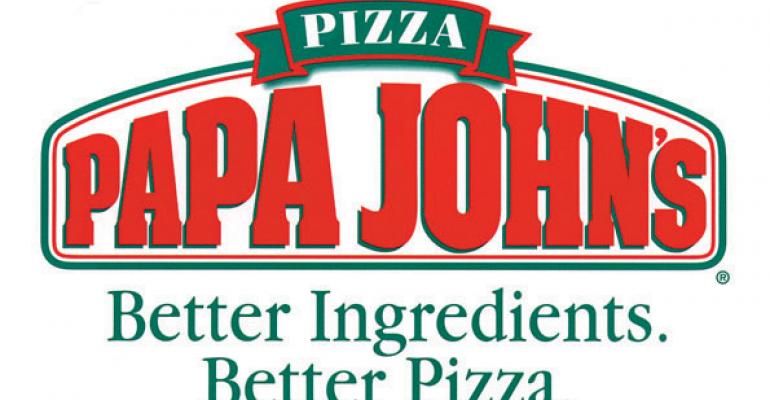Domestic same-store sales at Papa John’s International Inc. increased 1.9 percent in the fourth quarter ended Dec. 27, the company said this week, the weakest performance of the year for the Louisville, Ky.-based pizza chain.
Yet that was still growth, and came amid a growing price war in the pizza sector, as lower cheese prices give companies more room to offer discounts. The higher sales for the month appeared to assuage investors’ worries about the chain, and the stock skyrocketed nearly 10 percent Wednesday.
“If you go back 10, 15, 20 years, the pizza business was competitive,” Papa John's founder and CEO John Schnatter said during the company’s earnings call Monday morning. “It’s always real competitive. It will always be real competitive.”
“We differentiate ourselves by owning the quality position,” he added. “At the end of the day, consumers can tell the difference between a quality product and a mediocre product.”
The pizza business has been intensely competitive in recent months, as chains use technology and pricing to lure value-conscious customers. Domino’s Pizza Inc., as well as Papa John’s and private chains like Little Caesars, have grabbed market share from independents, and even other restaurant sectors. The largest pizza chain, Pizza Hut, has come out swinging recently with discount deals in a bid to regain lost traffic in recent years.
“Lower commodities likely contributed to more discounted pricing across the category,” Steve Ritchie, Papa John's president and chief operating officer, said during the earnings call. He also noted that burger chains and other quick-service restaurants have started discounting, too.
The discounting has generated some concern among analysts and investors that the 4,800-unit Papa John’s would lose some business.
2016 positioning
Papa John’s executives on the earnings call would not say how same-store sales have performed so far in 2016, but they did predict same-store sales growth of 2 percent to 4 percent for the full year.
“Given the recent concerns about competitive activity and Pizza Hut’s improvement, we consider the moderately better comps this quarter and outlook for the coming year an encouraging sign,” BTIG analyst Peter Saleh wrote in a note Wednesday morning.
Papa John’s has been doubling down on that quality positioning over the past year. The company recently named Sean Muldoon “chief ingredient officer,” a new title designed to highlight the company’s “better ingredients” mantra.
It started offering light ingredients for its pizzas last year, announced plans to introduce chicken pizza with antibiotic-free chicken, and removed some additives from some ingredients in a bid for a “clean menu.”
Free pizza guarantee
The chain has also started offering free pizzas for consumers dissatisfied with their food. Diners who tell Papa John’s they didn’t like the pizza can get another one for free, he said, in a guarantee that began this month.
Papa John’s executives believe the higher quality gives their pizza a better value perception that enables it to compete for customers, even with discounting common in the sector.
“The important thing is, price is what you pay, value is what you receive,” Ritchie said. “Papa John’s has the highest perceived value.”
Executives said that the chain has worked to manage its sales over the long term, and same-store sales at Papa John’s have increased for 12 straight years. Ritchie also pointed out that the company’s same-store sales in North America have increased 11 percent on a two-year basis and 15 percent on a three-year basis.
“We don’t manage the business quarter to quarter,” Ritchie said. “We look at the business day to day and make daily decisions that drive annual business.”
Net income at Papa John’s increased 16.6 percent in the fourth quarter, to $24.7 million, or 62 cents per share, from $21.2 million, or 52 cents per share, in the same period a year ago. For the year, net income increased 3.2 percent, to $75.7 million, or $1.89 per share, from $73.3 million, or $1.75 per share. But that also includes nearly $8 million related to legal settlement expenses.
Revenues for the quarter fell 2 percent, to $416.8 million from $425.5 million, and 2.5 percent for the year, to $1.64 billion, from $1.6 billion, due to lower equipment sales and lower sales of food to franchisees.
“None of this financial momentum would be possible without our commitment to deliver the best possible pizza,” Schnatter said. “We’re prepared to pay more to get better, and instead of hurting our bottom line, we’ve been rewarded with [earnings] growth.”
Contact Jonathan Maze at [email protected]
Follow him on Twitter: @jonathanmaze




